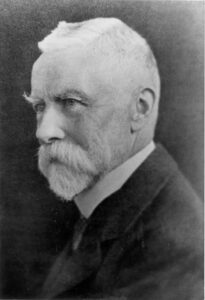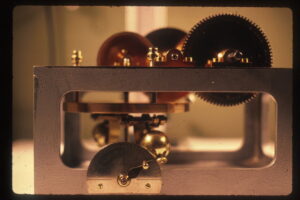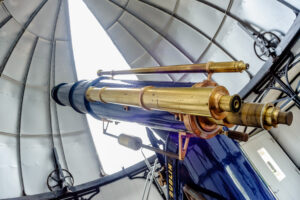By Matthew McMahon (Museum Collections Officer) and Malcolm McCleery (Volunteer Researcher)
Figure 1. Dr Lindsay, the 7th Director, posing with the Grubb 10 in the late 1940’s for the Irish Times (Armagh Observatory and Planetarium)
Curators and Historians are not meant to have favorites. Like good parents or carers (the root of the word curator is to care after all), we are meant to love all our charges equally, from the oldest manuscripts to the newest computers, that we keep for future generations. However, if you press any of them, you’ll discover they all secretly have a favorite and this is ours.
140 years ago, workmen had been bustling during the summer of 1885 on College Hill, Armagh, to prepare a new dome and telescope for use by the Director, Dr John Louis Emil Dreyer. The telescope had been paid for by a government grant, the first of its kind to be awarded to the Observatory, as well as the donations from the friends of the previous Director who wished to see a memorial to him raised in Armagh. The previous Director, Dr Robinson, had also wished to install a new instrument, and the type had been selected by him before his death in 1882.
An Equatorial is wanted suitable to the present requirements of Astronomy. That which we have is of only 2 ½ inches aperture; a proper instrument of this kind would cost from 600 to 700 pounds.
{Armagh Observatory and Planetarium Historical Collection M 80.2 (1879)}
To build such an instrument, there was only one choice.
Whilst many great instruments were being made in America, London and Germany, locally in Dublin there was an even more accomplished maker. Howard Grubb had grown up helping his father forge great telescopes, and in his early twenties had worked in the searing heat to build the Great Melbourne Telescope. Further, Dr Dreyer used the South Telescope at Dunsink Observatory, the first of what Howard would call his ‘Standard Equatorial’. This experience left him convinced that to finish his long work on the New General Catalogue, he would need a modern telescope that he could take precise measurements with and operate quickly with a small team.
Having settled on Howard Grubb as a maker, the decision remained about what type of telescope to purchase. The development of photographic telescopes had already begun, and the competition between manufacturers to make the next leap in technology was fierce. Howard Grubb attempted to persuade Dr Dreyer to take a risk on a novel design that would see the user sit comfortably inside the Observatory and control the telescope from afar, using a series of mirrors to observe the sky. Whilst this might have been an appealing thought in the cold months, Dr Dreyer knew the sort of work he wished to accomplish, and knew that the Standard Equatorial, mounting what was then considered a medium sized optical telescope, would provide him with a good compromise between the optical power he needed, and the ability to handle it himself without relying on assistants. The telescope also contained a reliable and powerful clock drive (Figure 4), which allowed it to track the stars across the night sky and enabled him to make detailed drawings at the eyepiece, as he had learned during his time at Birr.
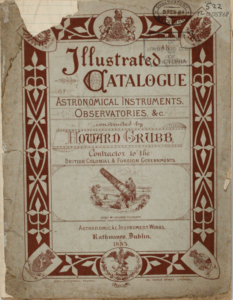
Figure 3. The front cover of the Catalogue of the Grubb Telescope Company in 1883, the same edition that Dr Dreyer referenced in his decision to buy a Grubb (with thanks to Museums Victoria)
The telescope arrived from the Grubb foundry and was mounted on 28 July 1885, though it would take until 8 October 1885 for it to be adjusted and prepared for use. By this time it was the first new telescope since the Grubb 15-Inch had been installed in 1834, by Howard Grubb’s father, 10 years before Howard had even been born! Working with a micrometer, a device attached to the eyepiece end of the telescope which allows the user to take precise measurements between two objects in the night sky, as well as the angle, Dr Dreyer put the finishing touches on his New General Catalogue which he published in 1885. He continued to use the telescope until he retired in 1916, albeit much less frequently and focused on specific phenomena that he was alerted to by old friends on the Continent.
Following the appointment of Rev. Ellison to the role of Director in 1917, the next astronomer to use the instrument was the young Mervyn Ellison, the eldest surviving son of Rev. Ellison. Between the age of 13 and 16 Mervyn began an intensive study of double stars, carefully measuring and remeasuring the distance between two stars to determine if they orbited each other, or just happened to be in line with each other. To do this he relied on correspondence from the most accomplished double star observer in the world at that time, T.E. Espin, who was nearly fifty years older than the teenager. Mervyn developed an ingenious system, positioning a second lens between the micrometer and the telescope to give him even greater magnification for accuracy. He published his work in the prestigious Monthly Notices of the Royal Astronomical Society a few months before his 18th birthday.
{Ellison MA (1927) Micrometrical Measures of Double Stars, made with the 10-in. Refractor of the Armagh Observatory. Monthly Notices of the Royal Astronomical Society 87(5): 465–466.}
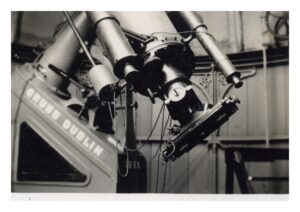
Figure 5. The Micrometer mounted on the telescope, photographed by Mervyn Ellison when he began to work on the problem of Double Stars as a teenager (Armagh Observatory and Planetarium)
Under the next Director, Dr Lindsay, the telescope acquired a whole new line of work; public engagement. Opening the Observatory to the public for the first time in over a century, Dr Lindsay began in 1937 to show the public the planets and other celestial objects with the Grubb 10-Inch. In 1950 he had it repaired and always tried to find ways to use it for modern research. The success of this varied, but it remained a firm highlight of any visit to the public. In 1974 it was dismantled with the intention of rebuilding it closer to the newly opened Planetarium, to be used for this purpose. However, the sudden death of Dr Lindsay in the summer of 1974, and his succession by the temporary leadership of Prof. Öpik, saw the telescope rebuilt in its original site, and the Planetarium was forced to look elsewhere.
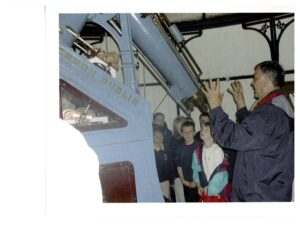
Figure 6. Pat Corvan showing school children the Grubb 10-Inch in the 1990’s. Pat was the longest user of the telescope having used it first in 1950, and had his last observing session with it in 2023 (Armagh Observatory and Planetarium)
Nearing its ninetieth birthday, and having seen the development of photographic astronomy, astrophysics, the galactic debate, the nuclear bomb and the space race, it seemed that the scientific days of the Grubb were over. However, in 1975 Dr Ray Wilson, an American, joined the staff and successfully used the instrument on every clear night to continue his work on Double Stars. His work is regarded as the last scientific work of the telescope, and since then it has continued to serve in other roles.
In the early 2000’s an extensive restoration project was funded by the Heritage Fund, and saw the telescope restored to its original state and the dome repaired. Since then, the telescope has been used for events such as the Transit of Venus, occultations and eclipses. It is also used to train our new PhD students and staff in historical astronomical skills, to give them a connection to their scientific ancestors who walked the same streets in Armagh and sat in the same rooms they continue to work in to this day. In cold winter nights they huddle around the dome, listening to the low whirring sound of the clock drive, and the rumble of the large metal dome moving around their heads, and look through eyepieces that left the workshops in Rathmines one hundred and forty years ago. This October Armagh Observatory and Planetarium will be running a series of events between 8 October (140 years since the telescope was finished) and 15 October (140 years since it was first used successfully), we hope you will join us to celebrate the birthday of this fantastic telescope.

